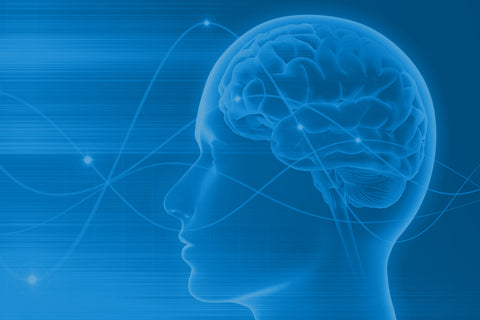
Whether in the boardroom, bedroom, on the athletic pitch, hiking Everest, fluffing (Google it), or trying to finish an ultramarathon, can we all agree that performance is kind of a big deal?
A few articles ago, we discussed Health Optimization Nootropics (HONs) in detail. You can find it here. However, if you are too unmotivated to click the link or have too many tabs open already (we've been there, especially when not blueing ourselves), here’s a quick refresher: HONs optimize brain function and contribute to the overall health of the brain.
Performance Optimization Nootropics (PONs), in contrast, optimize the brain’s fitness to perform a task but are not necessarily healthy for the brain.
In today’s article, we’ll dive deep into some of the most widely used PONs. We’ll also discuss several ways to prevent overclocking your system along the way…because as many of you likely know from first-hand experience, this is very possible!
The Old Definition of Nootropics
In our previous blog on HONs, we went over the brief history of nootropics as a whole. Here, we will only go over the five characteristics Corneliu E. Giurgea stated that define a nootropic, and the current definition of nootropics:
- Enhance learning and memory
- Enhance the resistance of learned behaviors/memories to conditions which tend to disrupt them
- Protect the brain from various physical/chemical injuries
- Increase the efficacy of the tonic cortical/subcortical control mechanisms
- Lack the usual pharmacology of other psychotropic drugs and possess very few side effects and extremely low toxicity
The current "cosmetic neurology" definition is (colloquial: smart drugs and cognitive enhancers) drugs, supplements, and other substances that may improve cognitive function, particularly executive function, memory, creativity, or motivation, in healthy individuals.
In short, the old definitions focus primarily on PONs and misses the various nuances and warnings in this category, so let’s set the record straight.
The Different “Key” Functions of PONs
In the long term, there can no be true performance optimization with out prior health optimization. In the short term, however, PONs may actually be able to optimize your brain’s fitness to perform a task (but you might pay for it later).
The key functions of PONs include enhancing:
- Memory
- Learning
- Focus
- Self Motivation
- Energy
Think of PONs as different types of keys. These different keys allow you to unlock different brain neurochemicals. Let’s go over some very common examples.
Nicotine
Nicotine is widely used around the world in the form of tobacco-containing products. Although it gets a bad rap due to its addictive potential when vaped or smoked, there are tons of research showing that it is also a nootropic and may be helpful in various cognitive disorders, including Alzheimer’s disease [4].
Nicotine works by stimulating the release of neurotransmitters such as acetylcholine, dopamine, glutamate, epinephrine, and serotonin [1].
The performance benefits of nicotine include the enhancement of:
- Verbal fluidity [2]
- Alertness [2]
- Memory [2]
- Neuroprotection
Maybe this is why doctors were such proponents of nicotine in the 1950’s and 1960’s: They were tired and needed the extra boost! Oh, and they were paid well by cigarette companies too. Sigh…
Oh, and lest we forget to mention: low dose oral nicotine, when not vaped or smoked, has a very low addictive potential when using <5 mg/day. Plus, it is well-known that the additives in nicotine-containing products (especially those vaped or smoked) enhance addictive potential.
Caffeine
As the most widely nootropic in the world, odds are you’ve likely consumed or will consume at least one cup of coffee or tea today. And the active ingredient in coffee, of course, is caffeine.
Caffeine is a PON and a known stimulant, working by blocking adenosine receptors, raising dopamine, and increasing acetylcholine levels. It has been widely studied and shown to improve wakefulness, increase concentration, improve motor coordination, and improve physicality during aerobic and anaerobic activities.
Adderall
The most commonly prescribed stimulant in the world is Adderall, a medication used in children and adults diagnosed with ADHD to help with focus and concentration. It is also used off-label in the medical world in patients with traumatic brain injury, dementia, and other psychiatric disorders to help with concentration.
Its use as a “street drug” is also rampant in universities and other educational institutions as well because if you gotta get er’ done, this drug is well-known for its ability to hyper-focus anyone who takes it.
As it is derived from the amphetamine class of drugs, Adderall works by blocking the re-uptake of norepinephrine, dopamine, and serotonin into the presynaptic neuron and increasing the release of these monoamines into the synaptic space. People on Adderall feel locked in for hours and hyper-focused but often crash badly once the drug wears off, especially if they are not health optimized.
Overclocking the System
Caffeine, nicotine, and Adderall are just three examples of the many PONs available, all of which stimulate your brain to work harder to perform a task or tasks (but to never multitask because multi-tasking is a myth… if you don’t believe us, see here).
As a quick reminder, the foods you eat eventually become electrons that get shuttled across the inner mitochondrial membrane so that you can make ATP, your cellular energy currency. But “eventually” in the sentence above is the understatement of the century because there are a vast number of chemical reactions and biologic intermediates needed to make ATP. And all these intermediate steps rely on optimized levels of vitamins, minerals, antioxidants, and hormones!
In biochemical terms, if you have cellular deficiencies (vitamins, minerals, antioxidants, hormones) or toxicities (heavy metals, gut pathogens, and more), stimulating the system to work harder, release more neurotransmitters, and make more energy will inevitably lead to a breakdown of your cellular machinery. And your mitochondria will be hit the hardest. This could happen the first time you PON yourself or it may happen the hundredth time (or more), but eventually, it’s very likely going to happen.
Side effects of PONs hint at this. The most common are headaches, jitteriness, dizziness, withdrawal once you stop taking it, and bad crashes after they wear off.
This is why there can be no true Performance Optimization without prior Health Optimization, at least over the long term. And also why here at Troscriptions, our mission is not just to provide “enlightenment cheat codes” (to address the many bottlenecks that will litter your way) but also to provide a robust framework to help you optimize your health overall. This framework is called Health Optimization Medicine and Practice (HOMe/HOPe), a 501c3 non profit company
HOMe/HOPe is teaching physicians and healthcare providers how to optimize health rather than treat disease using the science of metabolomics. You can learn more by checking out homehope.org.
PONs at Troscriptions
At Troscriptions, we use 2 PONs in Blue Cannatine: nicotine and caffeine. Both are low dose, pharmaceutical grade, and formulated with cannabidiol/CBD (HON) and methylene blue (Bluetropic).
With regards to performance, Blue Cannatine users report:
- Massive Boosts in Productivity and Focus
- Easy Access to Flow
- Increased Verbal Fluidity
- Enhanced Memory and Recall
- Enhanced Athletic Performance
CBD in Blue Cannatine gives you a smooth rise and come down after 3 to 5 hours of launch mode. CBD is also neuroprotective and increases your bliss. Methylene blue both supports mitochondrial function and enhances their function (i.e., that’s why it’s called a Bluetropic…it’s a combination of HON + PON). More on Bluetropics coming soon in another blog article to follow.
Can Blue Cannatine launch almost anyone? The answer is absolutely yes. But over the long term, it contains stimulants (i.e., PONs) that may overclock your system if it is not well optimized.
So In Conclusion…
Use PONs for performance when you need to, but choose ones that have a good safety record and, ideally, ones that also support your system and don't have a high potential of overclocking it.
And ideally, no matter the PON you decide to take, it's always a great idea to optimize your cellular foundation first or to do so in parallel!
References
- Benowitz N. L. (2009). Pharmacology of nicotine: addiction, smoking-induced disease, and therapeutics. Annual review of pharmacology and toxicology, 49, 57–71. https://www.ncbi.nlm.nih.gov/pmc/articles/PMC2946180/
- Valentine, G., & Sofuoglu, M. (2018). Cognitive Effects of Nicotine: Recent Progress. Current neuropharmacology, 16(4), 403–414. https://www.ncbi.nlm.nih.gov/pmc/articles/PMC6018192/
- Lu, J., Su, P., Barber, J., Nash, J. E., Le, A. D., Liu, F., & Wong, A. (2017). The neuroprotective effect of nicotine in Parkinson's disease models is associated with inhibiting PARP-1 and caspase-3 cleavage. PeerJ, 5, e3933. https://doi.org/10.7717/peerj.3933
- Dujin, C.M., & Hofman, A. (1991). Relation beween nicotine intake and Alzheimer's disease. BMJ, 302(6791), 1491-1494. https://www.ncbi.nlm.nih.gov/pmc/articles/PMC1670208/





Comments (0)
There are no comments for this article. Be the first one to leave a message!